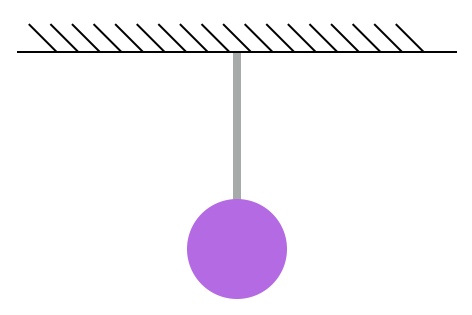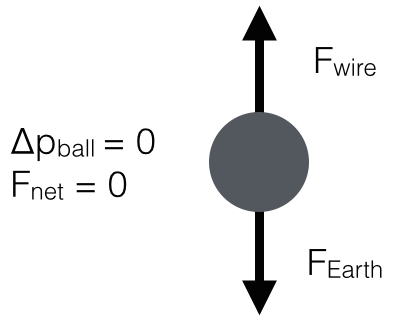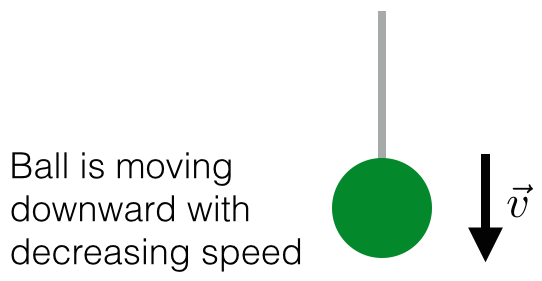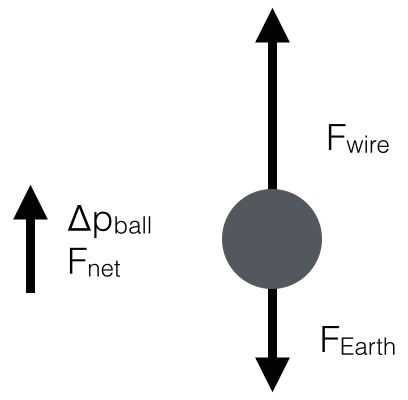This is an old revision of the document!
Free-body Diagrams
Free-body diagrams are one of the most useful tools in mechanics. They catalog all the forces acting on an object, and provide you with the necessary representation to make use of the Momentum Principle (i.e., to find the direction of the net force acting on the object). In these notes, you will read how to construct a free-body diagram and how it can help you reason about the direction of the net force on an object.
The Point Particle and the Free-Body Diagram
When you are trying to determine the motion of a system, it is important to determine the net force acting on the system. In physics, we often model systems as “point-particles”, that is, we neglect the internal structure and extent of the system – crushing it down to a single point that experiences the same net force as the real system. It is for this point particle that we draw the free-body diagram – a representation of all the forces acting on the system.
 To be concrete, consider a book lying on a table as shown in the figure to the right. The two interactions the book experiences are with the Earth and the table. We quantify those interactions as the force that the table exerts upward on the book, and the force that the Earth exerts downward on the book. In this case, the book is not changing its momentum (in fact, it's not moving at all). So, the strength of those interactions (forces) are the same.
To be concrete, consider a book lying on a table as shown in the figure to the right. The two interactions the book experiences are with the Earth and the table. We quantify those interactions as the force that the table exerts upward on the book, and the force that the Earth exerts downward on the book. In this case, the book is not changing its momentum (in fact, it's not moving at all). So, the strength of those interactions (forces) are the same.
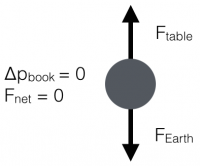 You can represent these forces in a free-body diagram where we crush the book down to a point. You then position that tails of the force vectors on the point with the tips point in the direction of the interaction. The relative length of the arrows tells you about the relative strength of the forces. In this case of the book on the table, the arrows are the same size because the forces are the same strength (figure on the left).
You can represent these forces in a free-body diagram where we crush the book down to a point. You then position that tails of the force vectors on the point with the tips point in the direction of the interaction. The relative length of the arrows tells you about the relative strength of the forces. In this case of the book on the table, the arrows are the same size because the forces are the same strength (figure on the left).
